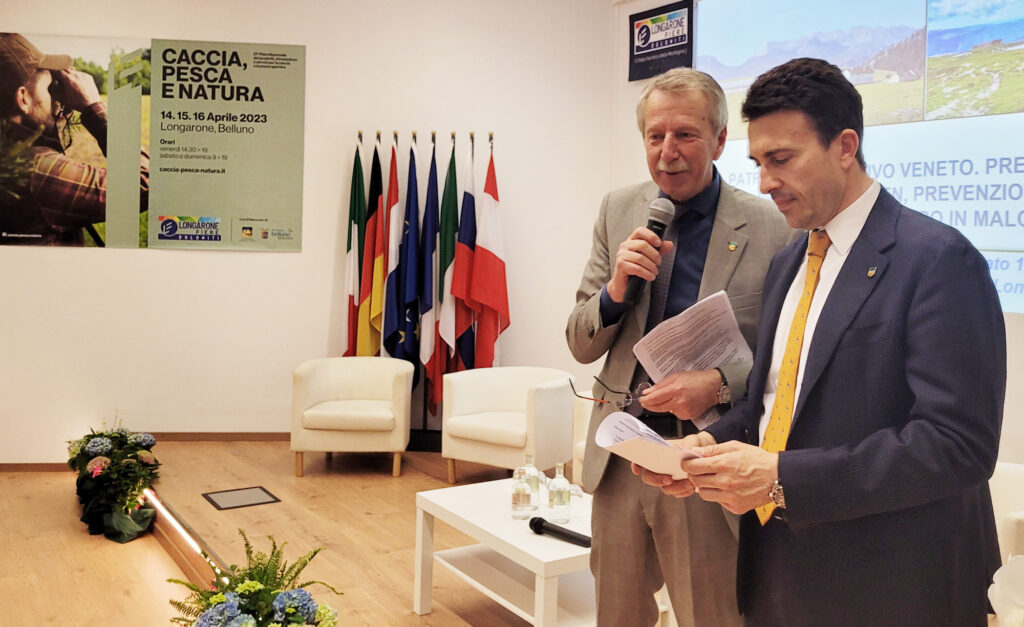At ‘Hunting, Fishing, Nature’ also the salmonid restocking plan following the storm Vaia
It is called Melken and it aims to study the behaviour of wolves towards herds grazing at high altitudes. It is the Veneto Region’s latest project on the protection and enhancement of the alpine heritage. Realised with the collaboration of the University of Padua, Melken was presented today at Longarone Fiere Dolomiti, during a conference dedicated precisely to the latest projects launched by the Veneto Region, as part of the 21st edition of ‘Hunting, Fishing, Nature’.
Melken started from a premise, the value of the malga heritage, explained Emanuele Pernechele, of the Veneto Region’s Operative Unit for Wildlife Planning and Management. There are more than 700 malghe located between Lessinia and the Dolomites, passing through the Asiago plateau and Grappa. ‘Since the return of the wolf, certain balances that had been consolidated for decades have been broken,’ Pernechele said. With Melken, we will analyse how the large predator changes grazing habits and thus be able to study more effective measures to counter predation. We have already observed that at the moment the wolf concentrates mainly on younger cattle,’ he said.
The project will start with the next alpine pasture season and run until 2027, involving five alpine pastures at first. Regional councillor Giovanni Puppato, the first signatory of draft regional law no. 152 (‘Enhancement of the regional heritage of public malgas’), also spoke on these zootechnical structures.
At another conference, the Region also illustrated the project for the repopulation of fish in the watercourses, which suffered extensive damage following storm Vaia. The bad weather at the end of October 2018 in fact wiped out the population of salmonids, basically marble and brown trout, in many cases. “In addition to beach nourishment, interventions were also put in place in the riverbed, with attention to environmental and habitat aspects, and with special actions to strengthen the ichthyogenic centres,” explained Giuseppe Cherubini, director of the Veneto Region’s Operational Unit for Planning and Management of Fishery Resources. ‘The Veneto Region has equipped itself with an ichthyic map and represents one of the first examples in Italy in this sense’.
The two conferences were opened by the greeting of the regional councillor for hunting and fishing, Cristiano Corazzari, who focused on the value of the activities of hunters, fishermen, breeders, and farmers in preserving the natural balance. “They are fundamental figures for the protection of the territory,” he said. “The focus on the ‘malghe’ (shepherd’s huts) that we have proposed at Longarone Fiere Dolomiti makes the measure of the attention we have paid to these structures, which are essential for the mountains. It is not for nothing that in 2022 we have paid out over 320,000 euro in compensation for damage caused by wildlife in favour of mountain pasture activities.”




